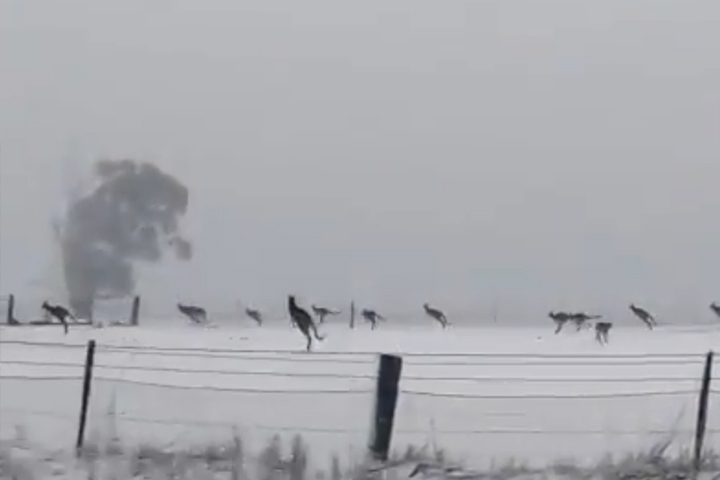Discover the Interesting Effects of Snow in Australia on Local Environments
Despite its track record for sun-soaked landscapes, Australia also flaunts areas blanketed by snow-- a sensation that greatly influences the nation's unique ecological communities. The insulating residential or commercial properties of snows secure flora and animals among the coldest winters months, while the melting snow supports rivers and aquatic life.
The Unexpected Areas of Snowfall in Australia
Although Australia is usually associated with sun-scorched landscapes and sandy beaches, specific regions remarkably experience snowfall. The high nation areas of New South Wales, Victoria, and Tasmania are particularly known for their wintertime snow. The Snowy Hills in NSW, as an example, receive bountiful seasonal snow, supplying a stark contrast to the nation's typical hot, dry environment. The Victorian Alps and components of Tasmania also see yearly snowfalls, changing the landscape right into a wintertime wonderland. These areas are not just anomalies but integral components of Australia's varied climate system. The existence of snow in these areas considerably influences regional environments, subsequently affecting the country's distinct biodiversity. Nonetheless, the specific influence on Australia's distinct flora will certainly be discussed in the following area.

Exactly How Snow Impacts Australia's Distinct Flora
These plants have actually advanced to make it through in extreme problems, with snow offering as a protective blanket from freezing temperature levels and rough winds. The snow likewise adds to the moisture content of the soil, supplying required hydration for plant life throughout the dry summertime months. In essence, the snow influences the timing of flowering and seed dispersal, the growth prices, and the survival of lots of plant species, showcasing the complex interaction between climate and vegetation in Australia.

The Adjustments of Australian Fauna to Snowfall
Simply as Australia's plants has adjusted to the wintery conditions, the local fauna as well, show impressive adaptations to the snowfall. It makes use of the snow as insulation, hibernating in rock gaps beneath the snow to remain warm. The Snow Skink, a types of lizard, alters its colour to white during winter season, offering camouflage against predators.
The Duty of Snow in Shaping Regional Communities
In forming the regional ecological communities, the duty of snow in Australia is both multilayered and profound. It affects the distribution of flora and fauna, mainly defining the biodiversity of alpine and sub-alpine areas. Snow supplies an important water resource, feeding rivers and storage tanks as it melts, hence sustaining a variety of water life types. Furthermore, snow serves as an insulator, safeguarding ground-dwelling organisms from extreme cold. Likewise, it plays a considerable function in soil development and nutrient biking. The routine cold and thawing of dirt caused by snowfall promotes the malfunction of rocks, enhancing soil fertility. The existence of snow forms the vegetation patterns, animal get redirected here behavior, and total sustainability of Australia's one-of-a-kind ecosystems.

The Future of Snowfall in Australia: Effects and forecasts

Offered the essential function snow plays in forming regional ecological communities, the future of snowfall in Australia is drawing boosting focus from researchers and ecologists. Present climate versions anticipate a considerable decrease in snowfall because of worldwide warming, with possibly extensive effect on original site neighborhood ecological communities. Less snow can lead to lowered water schedule in towering areas, adversely affecting wildlife habitats and plant life. Moreover, it might alter the timing of seasonal adjustments, disrupting the life cycles of many native types. The tourist market, greatly reliant on the winter snow season, may also deal with significant challenges. Comprehending these forecasts and their implications is crucial to develop reliable preservation methods, guaranteeing the conservation of Australia's distinct biodiversity and the sustainability of its economic situation.
Verdict
The role of snow in Australia's ecological communities is crucial yet frequently neglected. It acts as a guard, a nurturer, and a shaper of varied towering varieties, contributing to the published here richness of Australia's high country. As climatic patterns continue to move, comprehending the ramifications and potential transformations of these snow-influenced environments is vital. Therefore, the snow in Australia is much more than an all-natural spectacle; it's an important player in the nation's ecological story.
Despite its track record for sun-soaked landscapes, Australia additionally flaunts areas buried by snow-- a sensation that profoundly affects the country's distinct ecosystems. It makes use of the snow as insulation, hibernating in rock holes underneath the snow to stay warm - Does Australia Get Snow.In shaping the neighborhood environments, the function of snow in Australia is both extensive and multilayered. The visibility of snow shapes the plants patterns, animal actions, and total sustainability of Australia's one-of-a-kind ecological communities
Offered the essential duty snow plays in shaping neighborhood ecosystems, the future of snowfall in Australia is drawing raising focus from conservationists and scientists.